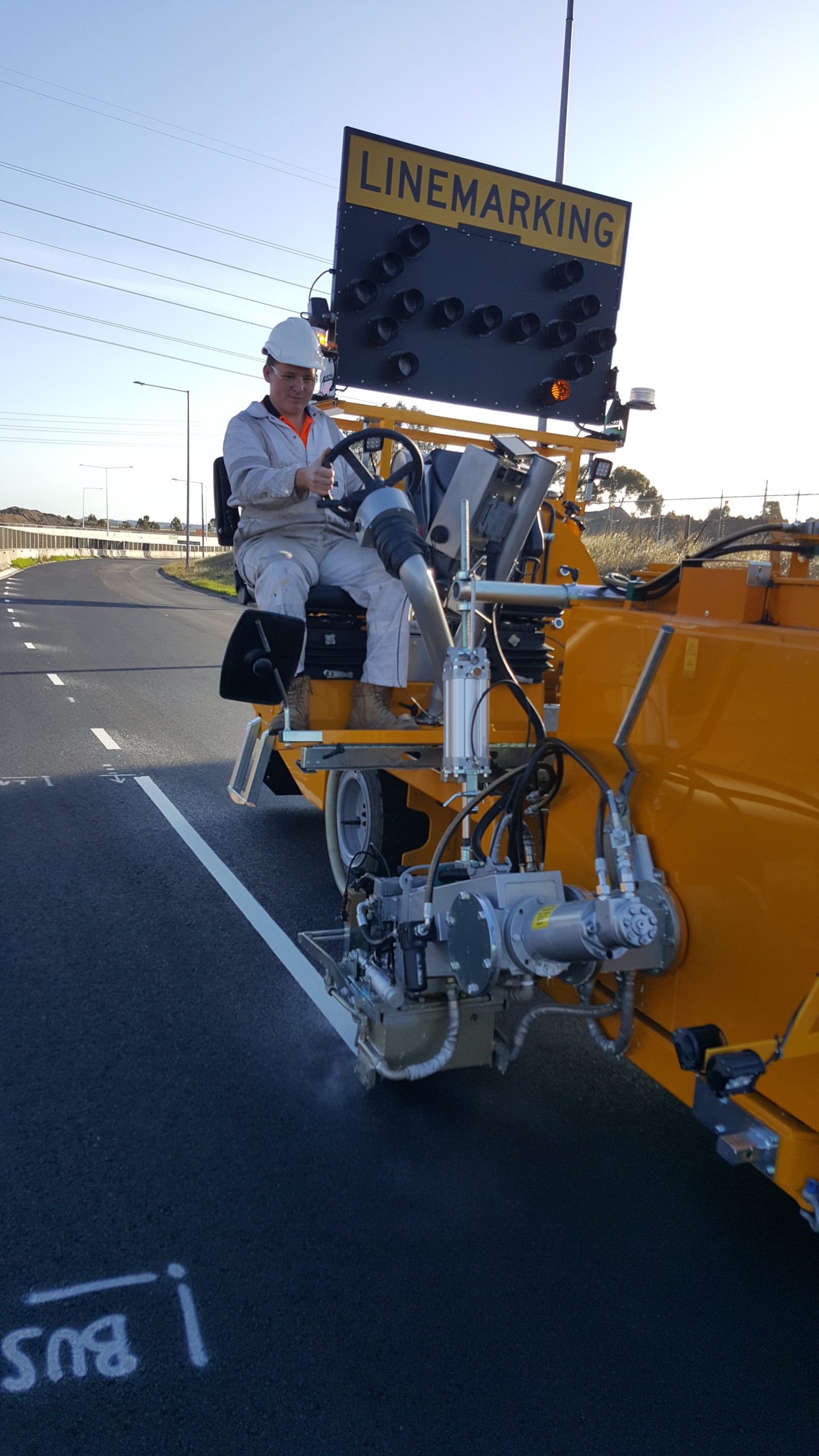
We assess line-marking coatings and contractors to keep standards high, so that quality products are used to keep people safe.
Whether it’s the supercars battling it out on Mount Panorama or families hitting the freeways on a weekend escape, consider the role of the humble white line, guiding our journeys and keeping us safe on our roads.
Without road markings our roads would simply be chaos. Those reflective white, continuous or dashed bands sprayed onto roadways mark the separation of lanes, identify general road rules like ‘stop’ and ‘give way’ and help pedestrians safely cross through traffic.
They guide our path, they keep us safe, and they’re so ubiquitous that we rarely give them much thought at all… but did you know those familiar longitudinal markings all have to undergo rigorous testing to make sure they can withstand constant exposure to traffic and changing weather conditions, and still function properly?
Watching paint dry
Behind the scenes, making sure road-marking technologies and the people and machinery applying them meet required standards, is our team of infrastructure technologies specialists.
In addition to assessing and certifying protective coatings on large infrastructure like ships and bridges, our team also accredits road markings across Australia. Not just anyone can paint white lines on our roads and not just any paint can be used. The dedicated team of engineers and scientists visit line marking paint manufacturers and contractors both here and overseas, ensuring they meet the respective standards set by the Australian Paint Approval Scheme and are applied according to the detailed requirements of the Painting Contractor Certification Program. Site visits assess a wide range of criteria including quality systems, safety and regulatory compliance, with accredited organisations re-audited each two years.

Reflect on this
An important feature of road markings is the reflective quality that assists night time driving. This is achieved by adding tiny retro-reflective glass beads to the paint after it has been laid and while it’s still tacky. Compared with other paints, line-marking paint is very quick drying. As well as preventing the beads from sinking, this feature also makes for more efficient road marking. The faster the paint dries, the quicker a stretch of road can be marked or re-marked, the less time traffic is disrupted.
Quick drying waterborne paint is the most commonly used coating for marking roads, followed by thermoplastic technology, where the reflective glass beads are mixed into the paint pre-application and coating is extruded at very high temperature. Other road marking products include cold applied plastic technology which uses a chemical reaction created by the mixing of two or more components to form the road marking, and solvent-borne paint. In Australia we use a combination of all of the above, depending on the surface being marked, the location it’s in and the traffic demands.

Laying down road markings
Getting the show on the road
Working in both the lab and the field, our team puts marking equipment and paint through its paces. During audits of contractors, they look at things like whether marking equipment is applying the right amount of paint and reflective beads in line with local requirements. They assess the paint used and certify that contractors continue to deliver technical and operational excellence, ensuring best practice quality assurance is in place. It’s important work, considering well-functioning road markings play a crucial role in preventing road accidents and keeping road trauma to a minimum.
No matter which state you live in, rest assured that our committed team is doing their utmost to ensure conforming products and best practice contractors are being used to mark the roads on which we travel. And next time you’re following a road on a dark, rainy night, give a little thought to the trust you place on the white lines to help you reach your destination safely.


5th October 2018 at 4:27 pm
These road narkings are great, though I keep wondering why an Australian invention of solar lights, mounted on the ground did not get support. Trailed for months on south road sea cliff area, they were fantastic on rainy, foggy and black out nights. Both red and white emissions of light helps compared to no idea where lanes are in the wet…
5th October 2018 at 3:51 pm
Great article. This is an important reminder of the value of CSIRO in quality control and regulation, as well as research.
5th October 2018 at 9:38 am
Why are they white, white is hopeless in the wet and at night. With more cars lights going towards the blue/ white colour spectrum, wouldn’t yellow again be a better choice as is still used in alpine areas.
4th October 2018 at 3:52 pm
I find yellow lines easier to read at night when it’s wet.
white just get absorbed into the road.
4th October 2018 at 2:23 pm
Why were the formerly yellow centre-lines in NSW changed to “white”? The lane separators (dashed lines) were always white in NSW, however my own feeling is that solid yellow lines worked well, and now that “edge lines” are solid white, I think it may save confusion as to whether the solid line on your right is a two-way divider or the white line on the edge. I think it is time to revert back to yellow lines for two-way dividers (not meaning the dashed lines, they can remain white). Cheers.